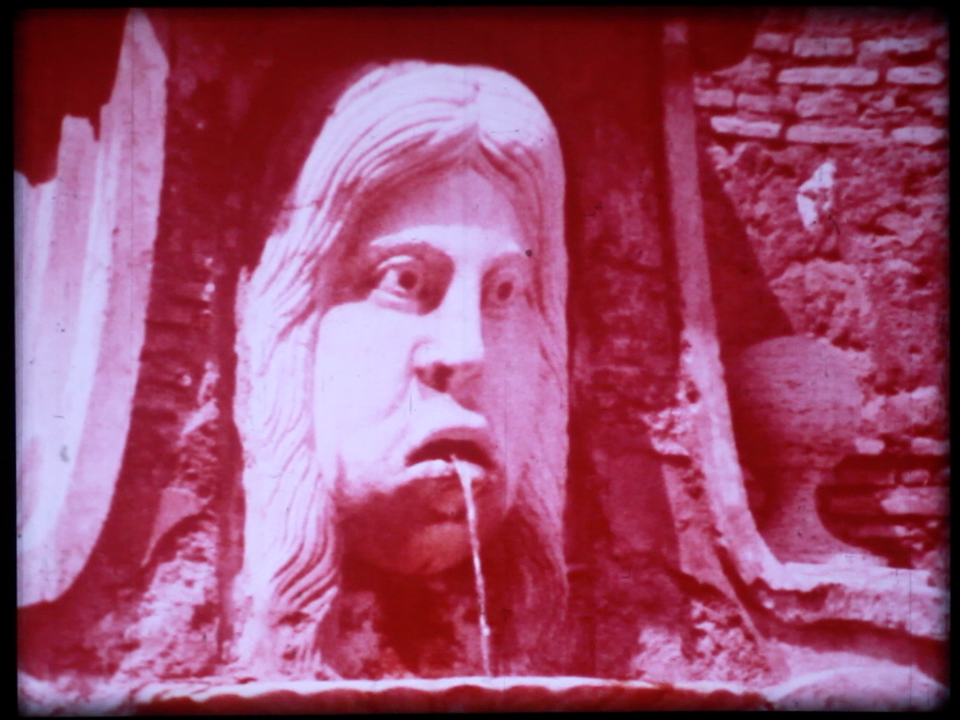
Fragment of the last reel from Geschichtsunterricht (1972) presented in an installation as a special event for the Venice Biennale Arte.
EN
“In 2014 Jean-Marie Straub was invited by the Venice Biennale to submit a piece for the Italian Pavilion the following year under the heading "Codice Italia." His response was In homage to Italian art, a digital re-filming of the last nine minutes of their 16mm film Geschichtsunterricht (History Lessons), badly degraded, scratched, and shaky. The damaged soundtrack quavers and no longer syncs with the image. English subtitles, written by Huillet, crumble away. The film fragment appears monochrome magenta due to colour fading where, over time, two of the three colour dye layers: cyan on the top, yellow in the middle, and magenta the bottom layer fade so that magenta is the final hue that remains.
Straub's specific decision to highlight the degradation of History Lessons from a copy that was meant for U.S. distribution in the 1970s but which only saw a very limited amount of screenings there, speaks not only to the physical destruction of film as a material and, through the pressures of digitisation on the film industry, its systematic destruction as a medium, but also takes to task the systems that determine funding, distribution and preservation of films – essentially, deciding on their right to exist at all.
In hearkening back to History Lessons – a film he and Huillet had made 43 years prior to In omaggio – Straub goes well beyond personal grievances with the Venice Film Festival, Italian cinematic systems, and a critique of international art festivals. He also speaks to how economic systems of exploitation resulting in overall societal degradation have greatly expanded since Brecht's writing Die Geschäfte des Herr Julius Caesar (The Business Affairs of Mr. Julius Caesar) in the 1930s and since their filming of History Lessons in the 1970s, as if to ask through projection of the ravaged film fragment – can we yet learn these lessons?”
Luisa Greenfield1

